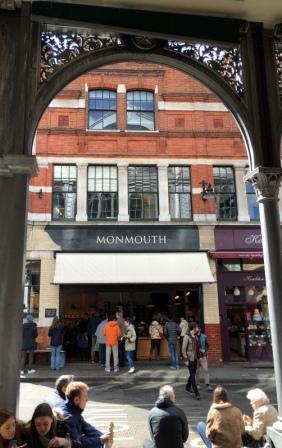This is a post about grandeur, love (and loss of love), escape, suicide, assassination, and mutton chops. It sounds rather ominous, but all this and more was in the mix when we visited the Hofburg Imperial Palace in Vienna. The Hofburg was the home of Emperor Franz Joseph and his wife the Empress Elisabeth, known as Sisi to Germans and Austrians. A tour of this huge and stately palace included—among other things—their opulent private apartments, the Sisi museum, and the incredible imperial silver collection.

Unfortunately, Sisi was rather ill-suited to the role of Empress. To us, she came across as a 19th century Princess Diana. In 1853, she was living the carefree life of a child in Bavaria. Then one day, the 23-year old Emperor Franz-Joseph arrived with his domineering mother, Princess Sophie of Bavaria. Their mission: to find a suitable, wife of course. The young emperor, who sported a spectacular pair of mutton chop sideburns, was immediately smitten with the shy Sisi, even though mama really wanted him to marry Sisi’s older sister Helene. Only five days after they met, Sisi found herself engaged at the tender age of 15. They married 8 months later, and she gave birth to the first of four children 10 months after the wedding.

Their union was not a very happy one. Although Franz-Joseph adored his beautiful bride, Sisi found life as an Empress to be isolated and confining. She was obsessed with her appearance, making sure that her 5’ 8” frame never went over 110 lbs. She was rather proud of her 16” waist which she achieved by having herself laced each day into leather corsets. This procedure could often take as much as an hour. She also spent hours taking care of her long locks of hair which reportedly cascaded to her ankles. When she wasn’t dealing with her arduous beauty regime, she could be seen riding one of her many horses, which she loved dearly. She was known by many contemporaries as one of the finest horsewomen in Europe.
As her life progressed, she became quite sickly and prone to melancholy. But her bouts of depression became almost clinical when she lost her first-born child at 2 years of age, most likely from typhus. At about the

same time she had a second child, a daughter who also became ill, but recovered quickly. But due to the heavy burden of Sisi’s despair, this child was basically ignored and the damage to their relationship over the years was irreparable. She did finally give birth to her only son, Rudolf who would grow up to have many of the same traits as his mother; he came to quite a sad end as we will see.

In my next post, you’ll learn about what happened to Rudolf and Sisi. And we’ll see how she became a larger-than-life icon to the Austrian people after her death (though her legend was mostly fabricated). More on that in the next post.












 cheap to take-out-a-second-mortgage expensive.
cheap to take-out-a-second-mortgage expensive.

